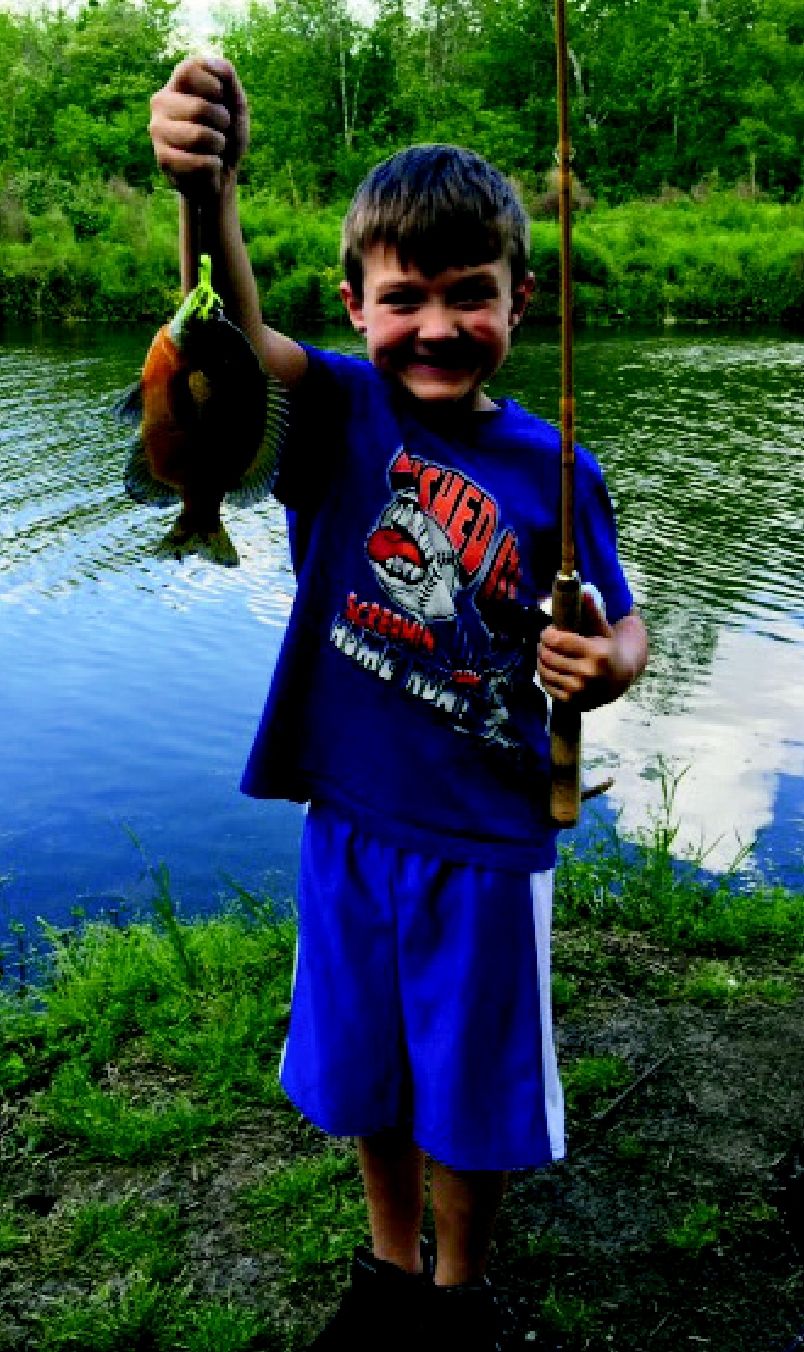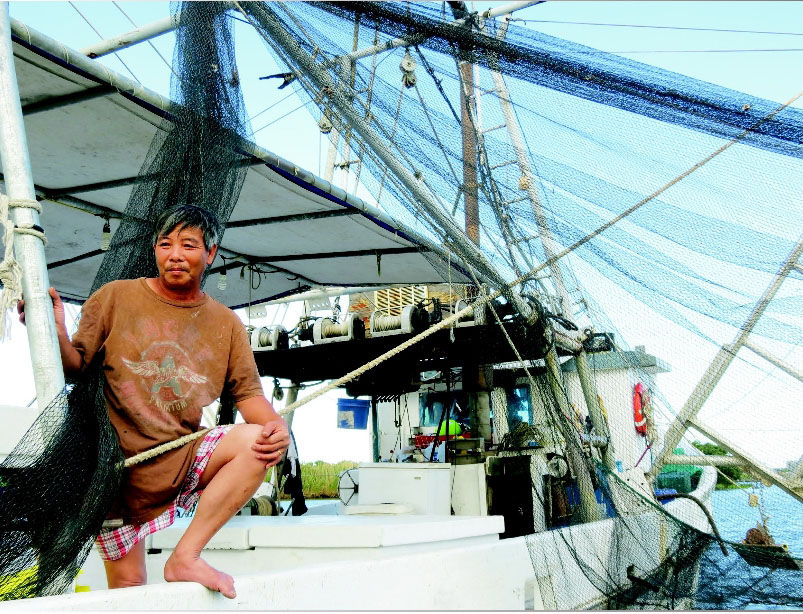
Beverly Thomas
June 2, 2015
Weekend Catch
June 2, 2015Cures – or coping strategies – are available to sectors of the local shrimp industry, according to seafood business experts.
Most won’t yield immediate results. But as shrimpers, processors and dock owners cope with downward-trending prices and ever-increasing costs, industry observers and participants say new ways of thinking and a re-shaping of Louisiana’s shrimp fishery are the chief ingredients needed for survival.
Julie James Falgout, Louisiana SeaGrant’s industry liaison, was asked what fishermen can do immediately to weather the current global shrimp glut.
“I would get a fresh products license and, if I could, sell direct to the public,” said Falgout, who has helped build the local LaTerre Direct marketing program, which uses the Internet to team individual boats with potential buyers. A similar program kick-started by SeaGrant has had huge successes in the Cameron area, but has caught on only piecemeal in Terrebonne and surrounding parishes.
The program, Falgout said, is not restricted to fishermen and can be used also by processors and docks.
“We can help all of them with that,” she said, adding that anyone with questions about the program and other options should call 985-873-6495.
A key to the program’s continued success is certification of shrimp that is caught as a Louisiana quality-certified product. The Louisiana Seafood Promotion Board, which has undergone a number of structural changes, can help. But industry insiders say that will only come about it the board works closely with certification programs to help ensure that Louisiana products are clearly marked and sold as such, giving an edge to consumers and businesses who want to know where their seafood is coming from.
Jeffrey Scott, a former processor who now sits on the board of directors of Houma’s Synergy Bank, is well aware of the challenges the industry faces.
The 5-pound blocks of frozen shrimp on which he built his own company’s fortune – while still having a place in the industry – are a product whose time is limited; Scott maintains that doing bulk business that way leads local shrimp directly into the highly competitive, supply-and-demand sensitive global shrimp market.
Big payouts from BP after the 2010 Deepwater Horizon oil spill, Scott says, could have meant capital for plant improvements and new marketing strategies. Instead, he charges, many in the industry did not re-invest that money in the industry, leaving them still unprepared to meet the challenge.
“Some diversified,” Scott said, adding that some does not mean all. “Diversification is the number one thing they have got to do.”
That can mean exploring new markets, like exports to China, which has a burgeoning class of wealthy consumers eager to get their hands on western products, which are considered a luxury. Some Louisiana shrimp companies
have diversified by selling value-added shrimp – cooked into gumbos or other packaged gourmet items – allowing for additional product potentials.
Another problem, Scott says, is that not enough processors or dock owners are taking the leap into 21st Century marketing and selling, not investing in sales staff to explore new markets and therefore are bogged down in the ever-increasing flood of overseas shrimp.
“A lot of them are letting the plants go to hell by not putting money into them,” Scott said. “If I was going into the business now, I would not go back to the 5-pound block. Even restaurants don’t want to thaw a block of shrimp.”
Cooperation between industry sectors, Scott said, is vital for the industry’s continued success.
“Everyone needs to work together,” he said. “The stores need to work with the plants, the plants need to work with the boats, and the boats need to work with the plants.”
Scott’s banking work gives him a unique perspective from which he has observed the industry’s failures and successes. Local banks like Synergy, as well as Coastal Commerce and South Louisiana Bank, have money invested in processor lines of credit and big boats operated by shrimpers. Despite problems in the industry, Scott said, the banks have faith in its ability to rise above adversity. Interviews with local bankers and loan officers confirm what Scott has said. But most bankers interviewed have also said they are closely watching as developments unfold, to determine what kind of future risks they wish to take.
David Veal, director of the American Shrimp Processors Association, which represents processors throughout the south and southeast, has faith in a program similar to the one Louisiana SeaGrant’s Falgout suggests, but which deals with a larger geographic model.
Wild American Shrimp, a company that was founded a decade ago through work by ASPA and the Southern Shrimp Alliance, represents both fishermen and processors,
“It started 10 years ago and was very successful for four years, then it had to close and it has ceased to operate,” Veal said. “We are working to reorient it. When it first started they were certifying shrimp and there were additional inspections for quality control. But it applied only to large shrimp, which was such a small part of the market. We are now focusing on how to market shrimp as an American product.”
Americanshrimp.com seeks to tie shrimp to the people who produce it in the public’s eye.
The message that must reach consumers, Veal said, is that buying any wild-caught shrimp landed in the U.S. – whether from Louisiana or Texas, Alabama, Georgia or elsewhere – is local buying.
With processors and docks moving their products between each other to fill demand gaps – shrimp landed in Louisiana might find its way to Alabama for processing, or shrimp from Texas to Louisiana – the important thing from the consumer point of view is that they know it is a product of the U.S. waters from which it originally came.
The common threat among all players interviewed was that U.S. shrimp will likely not ever be able to compete with overseas product on the basis of price, but that if consumer demand is there, if product lines are developed continually to meet the varied tastes of U.S. consumers, there will be room for growth.
Todd Rushing, whose New Jersey-based ShrimpTrader.com links producers and suppliers with buyers who deal with tons of shrimp at a time, primarily depends on the demand in the U.S. for overseas shrimp.
But he notes that domestic producers are welcome to work through his portal as well.
“We would like to deal with domestic product,” Rushing said. “We have had a couple of domestic guys who tracked us down and we are open to doing business with them.”
He is also convinced – as the man who sees global fluctuations in price every day – that branding and quality rather than price will be the domestic industry’s best bet, giving credence to opinions like those espoused by Veal.
“The domestic industry should be doing a better marketing job,” Rushing said. “It’s a great eating product. They have done a terrible job of espousing those attributes, and they cannot compete against the Asian supplies on price. They need to position themselves.”
Rushing also addressed a subject that is in local circles taboo: the use by domestic processors of tripolyphosphate and other chemicals that increase water retention in shrimp. While the chemicals are considered harmless – unlike the antibiotics used in some overseas shrimp feeds – restaurant owners, high-profile chefs and bulk buyers from northern markets have long lambasted them.
Their suggestion – echoed by Rushing – is adding a few more shrimp to a box in order to overcome the problem of shrinkage that the chemicals address would make for better marketing.
Veal notes that many of the processors who belong to his group include chemical-free shrimp in their product lines.
“It does increase the cost,” Veal said of the chemicals. “The chemicals prevent drip loss and if I want 5 pounds in a box after I thaw it, somebody has to pay for that half-pound of shrimp I had to put extra in the box.”
Interviews and examination of documents and reports related to the local shrimp industry reveal that no one suggestion will cure the troubles spawned by the global trading and selling of shrimp.
But what becomes clear as well is that continued steps toward a unified industry – where the needs of processors, fishermen, retailers and the desires of consumers are met and dealt with on common ground – will go a long way toward empowering recovery efforts.
“We are in this together,” David Veal said. “There is no us and them, there is just us. If I am drowning and a lifeguard comes to save me, my first reaction is to climb on his shoulder. I can’t do that for just a few minutes and then I go under again. We’ve all got to recognize that we are all out in deep water together here. We are all treading in very deep water.” E3
Sang Trinh on his shrimp boat, Moonlight, last week not far from Lake Pelto. Craig Authement, plant manager at the Indian Ridge plant near the Boudreaux Canal, after a short day of packing out shrimp











